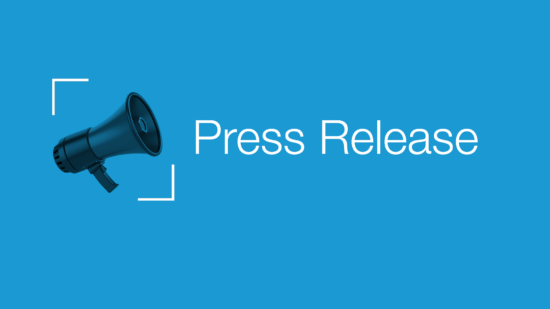
Jan and Hollis discuss the performance of the 60/40 portfolio a year after it experienced its worst year since 1937.
Revisiting the 60/40 Portfolio
Hollis Walker: This is Away from the Noise, a podcast for financial advisors and their clients. Hello, this is Hollis Walker with Jen Blakeley Holman, director of advisor education at Thornburg Investment Management. Welcome back. Thanks for joining us for another episode of Away from the Noise. Hi, Jan. Great to see you again.
Jan Blakeley Holman: Great to see you too. Hollis. Jan,
Hollis Walker: Jan, the markets have been unpredictable during the last year or so. What words of wisdom do you have for those of us who may have watched our nest eggs wobble a bit?
Jan Blakeley Holman: Well, actually, I, I kind of think they been in a trading range. If you look at the market, let’s say the Dow, it’s up 200 points one day, down 200 points next day, up 300 points. Do you know what I mean? So it’s like a trading range. But interestingly enough, overall, the S&P 500 year to date is up 15%, so it’s actually been a pretty good year to be invested.
Hollis, I think it’s time to revisit the 60/40 portfolio. And actually, we discussed it last year around this time. I bet you remember the discussion. But I’ll refresh the subject for our listeners.
Hollis Walker: Okay
Jan Blakeley Holman: The 60/40 portfolio strategy is one that’s been around for years. It’s a basic portfolio diversification strategy, where 60% of the portfolio is invested in equities, and 40% is invested in bonds. In addition to individuals holding that mix, it’s a favorite of pension plans, also. Over the years, the 60/40 portfolio has held up for investors, and it’s actually provided wonderful returns with low risk levels. But that wasn’t the case in 2022 when the portfolio lost 17%. And the fact that throughout the year, the portfolio was declining in value caused many people to think it was time to declare the strategy dead.
Hollis Walker: I remember our talk about this last year, I understand the concept. But I’ve always wondered, why is the portfolio 60/40 instead of 50/50 or 70/30?
Jan Blakeley Holman: Well, that’s an excellent question. Going back a bit, I think it’s important to talk about Harry Markowitz, who may not be one of your friends, but he was an economist at the University of Chicago. And in his dissertation, he argued that an investment portfolio’s risk can be lowered, and its return will be potentially increased if the holdings are diversified, to include negatively correlated investments. Now, what does that mean? It simply means that the most efficient portfolios are those that hold investments whose price movements are different. For many years, it’s worked well.
Hollis Walker: Okay, but wait, isn’t it true that as you age, you should shift more of your investments from stocks and into bonds?
Jan Blakeley Holman: Well, you know that was an approach when I first got into the business, eons ago, that was the approach people took, because they thought, okay, people should get more conservative. And when I started in the industry, 47 years ago, interest rates were very high. And in fact, you could get some pretty good coupons if you bought bonds. But people are living longer. And because they’re living longer, they need an investment type that will offset inflation. And bond investments are not that. Equities are the ones that over time hopefully will appreciate in value and outpace inflation. So that old, reduce the risk of your portfolio doesn’t work anymore, because a lot of people are going to retire and then live for 35 or 40 more years.
Hollis Walker: That’s a frightening concept, isn’t it? So what about this past year 20? Well, 2022.
Jan Blakeley Holman: Well, 2022 was very unique. And the portfolio recorded its biggest loss in the strategy since those components together were measured, and that has been from 1937. And that’s a long time. But last year, remember, inflation spiked to its highest level in 40 years, because of all the Covid money that came in. To put pressure on people to prevent them from borrowing, the Federal Reserve started to raise the Fed funds rate and the Fed funds rate is the interest rate the Fed charges banks to borrow. They raised interest rates 11 times in 2022, from a quarter percent to 4.5% in December. But they didn’t stop there. Because this year, they’ve gone up four times more, the Fed has raised rates, and now the Fed funds rate is at 5.5%. But again, what does the Fed funds rate mean to me? Nothing. Here’s what it means to me in real life. What it means to me is that in December of 2021, the 30-year mortgage rates were about 3.6%. Now, they’re around 7.8%.
Hollis Walker: Wow.
Jan Blakeley Holman: It’s incredible. It is incredible. Inflation and the Fed’s increases during 2022 created conditions that were the perfect financial storm for the 60/40 portfolio. And if you remember, the perfect storm, it’s not a good thing.
Hollis Walker: Right.
Jan Blakeley Holman: Okay. And the portfolio was squeezed from both sides. The S&P fell almost 20% last year, and the Bloomberg US Aggregate Bond Index was down 13%. But one year, does not make a trend. The numbers actually speak for themselves. In the 42 years between 1980 and 2022, the 60/40 portfolio was flat in two years, up 34 years, and down six years. That means investors who relied upon this investment mix, have seen their portfolios increase in value 81% of the time. I’d take those numbers any day.
Hollis Walker: Sounds good to me.
Jan Blakeley Holman: And the portfolio is recovering year to date, it’s up close to 6%. The 10-year average annual return is 6.96%. So it’s looking much, much better. Now, here’s where the rub comes in. When it comes to investing, there’s always something that’s performing better than what you have. It feels that way, doesn’t it?
Hollis Walker: Absolutely.
Jan Blakeley Holman: Now, there’s a reason why, for example, that an investor would have a 60/40 portfolio and not 80% of their portfolio in stocks. And it has to do with risk and being able to withstand volatility, and the potential of downside all those things. So, investors have to forget about the fact that they can always find something doing better, because they’re never going to catch that. Chasing performance is a loser’s game. During every bear market, millions of investors bail out of investments. They decide to sit on the sidelines and they say, I’ll get back in when things calm down. And I can’t tell you how many people I’ve heard say, well, I got out, but I never got back in and now it’s too high. And I don’t want to invest now. And on and on and on. Don’t think you can time the market. You need to remain invested over the long term. And you need an investment strategy, like the 60/40 portfolio, that gives you the opportunity to withstand some of the worst volatility in the market.
Hollis Walker: Thank you, Jan, I’m already feeling calmer about the whole 60/40 thing. Now it’s time for that part of our podcast where you answer a listener’s question. Here’s today’s question.
Dear Jan, Every day, I’m getting emails and flyers from my employer pushing me to make decisions about my benefits for next year. One option is a high deductible medical plan with a health savings account. But this is not an ordinary savings account, is it? Am I missing something? Help! Sincerely, still healthy but confused.
Jan Blakeley Holman: Still healthy, thank you very much for your question. It’s a very timely one. Before I answer the specific question you asked, let me talk about employee benefits for a second. As most of our listeners know, employee benefits are part of a compensation package. They include things like medical insurance, dental and vision coverage, vacation days, disability insurance, life insurance, maternity and paternity leave, profit sharing, retirement and on and on. Companies who offer employee benefits often pay all or part of the cost of those benefits. In many cases, the cost borne by employees are paid with pre-tax dollars, which is great because what that does is lower your taxable income. While most companies prefer traditional benefits, medical, dental, life insurance, there are companies that offer unique benefits like remote work, volunteer time, professional development, student loan reimbursement…
Hollis Walker: And pet insurance!
Jan Blakeley Holman: I know, which I have, but it’s not an employee benefit. When it comes to medical insurance, it’s common for companies to offer a couple of health insurance plans. One type is a regular group plan. The other is a high deductible plan. And that’s what you’re referring to. The high deductible plan is similar to the regular plan, but in that high deductible plan, you’re going to have a lower monthly out of pocket premium cost and a higher deductible. On the regular plans, typically you don’t have a deductible, you’ll have a copay, or something like that, but not a deductible. In this kind of plan, the employee pays the full cost of non-preventive health care services until they meet the annual deductible. The annual deductible increases as you add family members to the policy. Once the employee is paid the maximum out of pocket deductible, the plan covers 100% of the additional covered expenses incurred by family members. So from a cash flow standpoint, the high deductible plan can be more expensive, at the beginning of the year. But if you have a lot of medical expenses in an annual year, and you can get that deductible taken care of pretty quickly, it’s a great plan to have. Because what comes with it is the health savings account. In a regular plan, you have a flexible spending account. You can put away a certain amount of money every year, and it’s taken pre tax, and then you can use that money to pay for medical expenses that you have incurred throughout the year. The Health Savings Account works the same way. But the amount you can put away on an annual basis is higher, and that account is mobile. In other words, if you go to a different employer, you can take that HSA with you. You can’t take a flexible spending account with you.
Hollis Walker: So you have to wait until December 31 to quit your job?
Jan Blakeley Holman: That’s right. Now, because you specifically asked about the HAS, still healthy but confused, I’m going to focus on that type of account, there are three requirements that must be met to qualify for a health savings account. One, you are not claimed as a dependent on someone else’s tax return. Two, you are not enrolled in Medicare. And three, you are covered under a high deductible plan. If you meet those, then here are the benefits of an HSA plan. As I said contributions are pre tax, the funds grow tax free. Withdrawals are tax free, if they’re used to pay for eligible med, medical expenses. The annual contributions, as I said, are more significant. So you can put a significant amount away. And HSAs offer you the option of investing the money. Some of it or all of it. So you could buy mutual funds, stocks, bonds, those types of things.
Hollis Walker: So, if you don’t use up all your HSA money, does it roll over?
Jan Blakeley Holman: Yep.
Hollis Walker: Ah, so that’s why you can invest it.
Jan Blakeley Holman: And it keeps on rolling. So some people call it like, the health version of the retirement plan.
Hollis Walker: Right, so you know, they may be young and healthy now but down the road, they might have a serious issue and that HSA has been sitting there growing.
Jan Blakeley Holman: Right. You and I have heard people awfulizing about the cost of medical care in the future and how everyone’s going to be just pressured, pressured, because they have to pay high cost for drugs and for medical appointments and that type of thing. Building up an HSA account over the years can be something amazing. So, still healthy but confused, look at your medical plan offerings very closely determine which makes sense and understand not just the present benefits, but the future benefits of potentially having a high deductible plan with an HSA.
Hollis Walker: Is that something your financial advisor could help you decide?
Jan Blakeley Holman: Absolutely.
Hollis Walker: Okay, great. Well, that’s all the time we have for today. You’ve been listening to away from the noise with me your host Hollis Walker, and Jan Blakeley Holman, director of advisor education at Thornburg Investment Management. If you’d like to suggest a topic for us, email us at awayfromthenoise@thornburg.com. If you’d like to hear more episodes of away from the noise. You can find us on Apple, Spotify, Google podcasts or your favorite audio provider, or by visiting us at thornburg.com/podcasts. Jan can also be found on LinkedIn. If you like us, subscribe, share us on social media and leave us a review. Until next time, thanks for listening.
This podcast is for informational purposes only, and should not be relied upon as investment, legal, accounting, or tax advice. It is not intended to predict the performance of any investment or market, and is not a recommendation, offer, or solicitation to buy or sell any security or product, or adopt any investment strategy. Past performance is not an indication of future performance. Investing involves risk including possible loss of the money you invest. Consult your investment advisor before making any investment decisions. The information contained herein has been obtained from sources believed to be reliable. However, Thornburg Investment Management makes no representations or guarantees as to the accuracy or completeness of the information and has no obligation to provide any updates or changes. The views expressed are subject to change and do not necessarily reflect the views of Thornburg Investment Management. This podcast is for your personal and non-commercial use only. You may not use it in any other manner without the prior written consent of Thornburg Investment Management. Thank you for listening.
Important Information
This podcast is for informational purposes only and should not be relied upon as investment, legal, accounting or tax advice. It is not intended to predict the performance of any investment or market, and is not a recommendation, offer or solicitation to buy or sell any security or product, or adopt any investment strategy. Past performance is not an indication of future performance. Investing involves risk including possible loss of the money you invest. Consult your investment advisor before making any investment decisions.
The information contained herein has been obtained from sources believed to be reliable. However, Thornburg Investment Management makes no representations or guarantees as to the accuracy or completeness of the information and has no obligation to provide any updates or changes.
The views expressed are subject to change and do not necessarily reflect the views of Thornburg Investment Management, Inc. This information should not be relied upon as a recommendation or investment advice and is not intended to predict the performance of any investment or market.
This podcast is only for your personal and noncommercial use. You may not use it in any other manner without prior written consent from Thornburg Investment Management.
Discover more about:
More Insights

What Investors Need to Know About Markets and Macro Now

Thornburg Partners with Capital Strategies Partners

Thornburg Bow River Advisers Supports 5th Century Partners’ Refinancing of Perspecta

Evaluating the Impact of Active Management, International Investing, and Dividends

Active Management, International Investing, and Dividends
